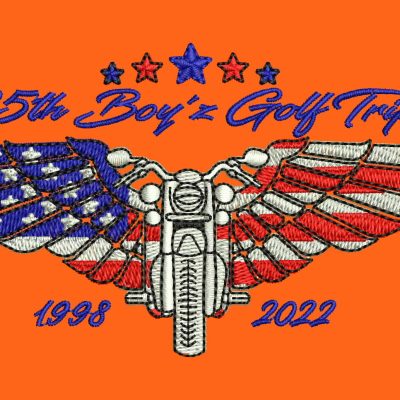Trustworthy Digitizing for Embroidery: Relied On by Professionals
Trustworthy Digitizing for Embroidery: Relied On by Professionals
Blog Article
Understanding the Needlework Digitizing Process: Your Ultimate Overview
Needlework digitizing is a careful craft that needs accuracy and competence to equate detailed styles into electronic formats for maker embroidery. As craftsmens start this journey to master the needlework digitizing process, a thorough understanding of the fundamentals establishes the foundation for excellence. Nonetheless, past the fundamental expertise lies a world of innovative software, specialized devices, and nuanced methods waiting to be checked out. By delving right into the nuances of digitizing, one can unlock a globe of creative possibilities and elevate their needlework tasks to new elevations.

Comprehending Needlework Digitizing Essentials
Needlework digitizing basics form the foundation whereupon detailed styles are translated right into machine-readable layouts for exact sewing. This preliminary action in the embroidery digitizing procedure is critical for ensuring that the last stitched item is a loyal representation of the initial layout. Recognizing embroidery digitizing fundamentals entails realizing essential principles such as stitch types, stitch direction, density, underlay, and pull settlement.
Stitch types play an essential role in establishing the aesthetic and textural result of the stitched layout. By choosing the ideal stitch type, whether it be satin, fill, or running stitch, digitizers can attain the preferred result and boost the overall quality of the needlework. In addition, stitch instructions influences the flow and dimension of the style, while thickness establishes the spacing and coverage of the stitches.
In addition, rug stitching offers stability to the layout by securing the fabric and avoiding distortion during the needlework process. Draw payment is one more essential factor to consider to combat the natural tendency of fabric to contract when stitched. Understanding these needlework digitizing basics is basic for creating professional-quality stitched products.
Choosing the Right Digitizing Software Application
Selecting the proper digitizing software program is a crucial choice that substantially impacts the performance and top quality of the needlework digitizing process. Digitizing for Embroidery. When picking the ideal digitizing software program, it is necessary to consider variables such as the intricacy of designs you intend to produce, the user-friendliness of the software program, the degree of customer assistance offered, and the compatibility with your embroidery machine
There are different digitizing software application options available on the market, ranging from basic programs for newbies to innovative software program for professional digitizers. Some prominent selections consist of Wilcom EmbroideryStudio, Hatch Embroidery Software Program, and PulseID. These software bundles provide a large range of tools and features to assist you create intricate styles easily.
Prior to choosing, it is a good idea to check out the various software application options with free tests or demonstrations to determine which one best suits your demands. Furthermore, reviewing evaluations and looking for referrals from seasoned digitizers can provide useful insights right into the staminas find more info and weak points of each software (Digitizing for Embroidery). By meticulously assessing your demands and comparing the functions of various digitizing software application, you can make an educated option that enhances your needlework digitizing operations
Digitizing Devices and Methods

Optimizing Design Settings for Needlework
Understanding the intricacies of design setups is fundamental in accomplishing optimal results in the embroidery digitizing procedure, structure upon the foundation laid by understanding digitizing devices and techniques. When enhancing style settings for embroidery, it is vital to think about variables such as stitch kind, density, rug, draw compensation, and enrollment. Registration setups line up different components of the style properly, keeping overall design honesty.

Troubleshooting Common Digitizing Issues
When coming across typical digitizing problems throughout the embroidery procedure, it is important to understand the source and implement effective options quickly. One typical problem is stitch thickness issues, where stitches might be as well dense, triggering the material to tighten, or too sporadic, bring about spaces in the layout. Changing the stitch thickness setups in the digitizing software application can aid solve this issue.
An additional frequent challenge is string breaks during the embroidery procedure. This can take place because of numerous factors such as incorrect stress setups, dull needles, or using low-quality thread. Ensuring correct maintenance of the embroidery machine, consisting of regular needle modifications and stress adjustments, can reduce the occurrence of thread breaks.
In addition, style enrollment mistakes can cause misaligned aspects within the embroidery layout. Checking the style placement in the digitizing software application and making necessary adjustments prior to stitching can aid in read the article preventing this problem. By addressing these typical digitizing issues immediately and properly, you can make certain a smoother needlework process and high-grade completed products.
Verdict
In conclusion, mastering the needlework digitizing procedure needs a strong understanding of the basics, the best selection of software program, and understanding of devices and strategies. Optimizing style setups and repairing common digitizing problems are critical steps in guaranteeing premium embroidery outcomes. By adhering to these actions faithfully, one can achieve accuracy and efficiency in the digitizing process.
Report this page